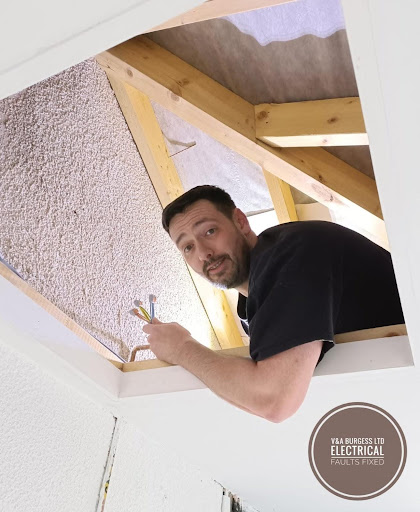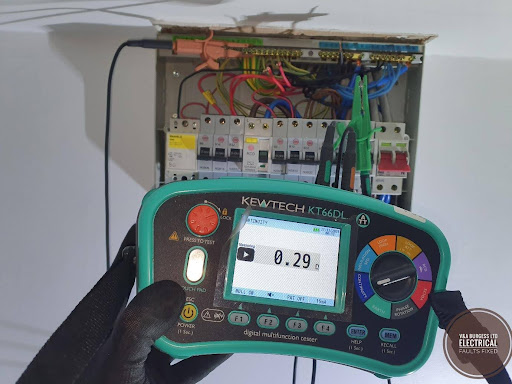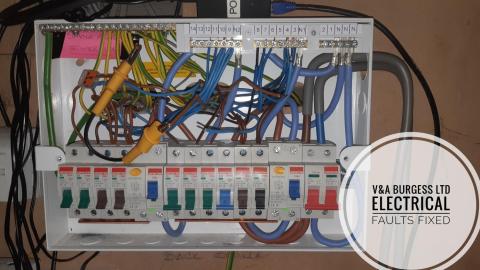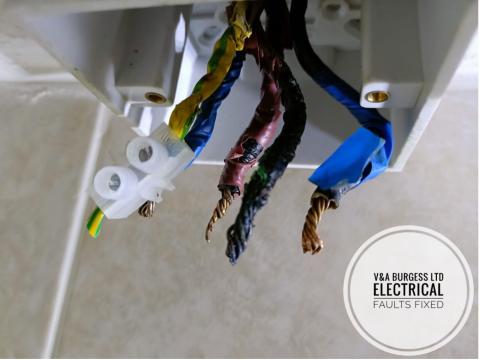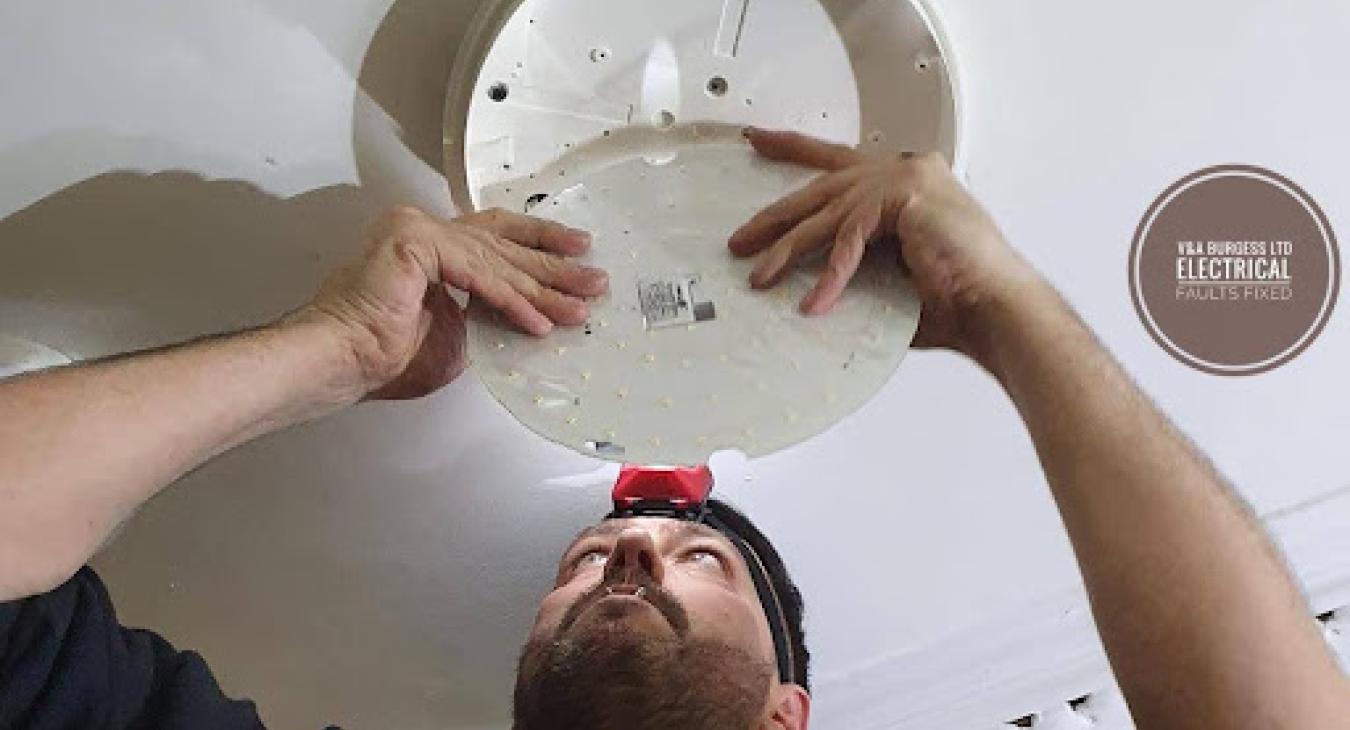
Table of Contents
- The typical costs for rewiring home lighting circuits in 2025 are as follows:
- Understanding Your Home's Electrical System
- Factors Affecting Rewiring Costs
- Average Costs for House Lighting Rewiring in 2025
- Breaking Down the Costs
- When Rewiring Becomes Necessary
- Modern Electrical Demands
- Planning for Future Needs
- The Rewiring Process
- Cost-Effective Approaches
- Choosing the Right Electrical Contractor
- To Sum Up
1) The typical costs for rewiring home lighting circuits in 2025 are as follows:
- Top Floor Flat with Loft Access: £1200 - £1500
- 2 Bedroom House Both Floors: £1700 - £2400
- 3 Bedroom House Both Floors £1850 - £2600
- 4 Bedroom House Both Floors £ 2100 - £3000
- 5 Bedroom House Both Floors £3000 - £4000
As a licensed electrician and electrical tutor serving the Liverpool area, I regularly encounter homeowners who are concerned about the costs involved in rewiring their home's lighting systems. Whether you live in an old house with outdated wiring (the kind where flicking a switch is like playing electrical roulette) or you're dealing with faulty wiring that poses safety concerns, understanding the average cost of electrical work can help you make informed decisions about this important electrical project.
Back to top2) Understanding Your Home's Electrical System
Before diving into more of the costs, it's essential to understand what makes up your home's electrical system. The lighting circuits in your property are part of a complex network that includes circuit breakers, new wiring paths, and connections to light fixtures throughout your home. In older homes, particularly those built before the 1970s, the original electrical wiring may not meet modern standards set by BS7671 Wiring Regulations, making rewiring not just a good idea but often a necessity for safety. The age of the home plays a vital role in determining whether you need new wires. Properties with aluminium wiring, rubber sheathed wiring or other outdated wiring systems present fire hazards that require immediate attention from a professional electrician. These older wiring systems weren't designed to handle today's electrical needs, especially with the increasing use of new appliances, electric vehicle charging points, and modern lighting fixtures. Let's face it - the original wiring in many Liverpool homes was installed when the most high-tech appliance was probably a fancy new electric kettle!
Back to top3) Factors Affecting Rewiring Costs
3.0.1) Home Size and Layout
The size of your home is the primary factor determining the total cost of any rewiring project. Electrical wiring costs are sometimes calculated per square foot or square metre, with the size of the home directly impacting the number of new cables needed. A small home might require basic work on a few circuits, while larger homes with complex layouts will need more extensive electrical upgrades.
For a typical terraced house in Liverpool, you might expect costs ranging from £85-£110 per square metre for a full rewire. However, when focusing specifically on lighting circuits, the costs can be more manageable. The number of rooms, ceiling height, and whether you have easy access through a crawl space or open walls all influence the overall cost. (And yes, that mysterious cupboard under the stairs that nobody's opened since 1987 might finally prove useful!)
3.0.2) Age and Condition of Existing Wiring
Properties built in different eras present unique challenges. An old home with old plaster walls requires more careful planning and often results in higher costs due to the difficulty of running new wires without causing property damage. In contrast, newer homes or those with previous electrical upgrades may only need partial rewiring of specific lighting circuits.
The condition of your existing electrical system also matters significantly. If your circuit breaker panel is in good shape and meets current BS7671 Wiring Regulations, you may only need to replace the old wires running to your lighting fixtures rather than undertaking electrical work on the entire home. In some cases, the consumer unit may need replacing but your electrician will discuss this with you - don't worry, we speak human as well as electrical jargon!
3.0.3) Access and Installation Challenges
One factor that greatly affects costs is the accessibility of your home's wiring routes. Properties with easy access through unfinished basements, accessible loft spaces, or open wall spaces will have lower labour costs. However, many older homes in Liverpool have limited access points, requiring electricians to create small holes in walls and navigate through challenging reach areas, which increases both time and costs.
Homes with complex layouts, multiple floors, or finished basements present schedule difficulties that can extend the duration of the electrical project. These factors need careful consideration when planning your rewiring project and budgeting for the total rewiring cost. Think of it as an electrical treasure hunt, except instead of finding gold, we're hunting for the safest route to run your new cables without turning your wall into Swiss cheese.
Back to top4) Average Costs for House Lighting Rewiring in 2025
4.0.1) Basic Lighting Circuit Rewiring
For a standard lighting circuit serving 2-3 rooms, homeowners can expect to pay between £900-1200. This includes the cost of new cables, basic light switch replacements, and connection to your existing circuit breaker panel. This type of basic work is common in properties where only specific lighting circuits have developed electrical problems - you know, like when the bathroom light decides it only wants to work on Tuesdays.
4.0.2) Whole House Lighting Rewiring
A full rewire of all lighting circuits in an average-sized home typically costs between £1,800-3,600. This includes replacing all old wires serving lighting fixtures throughout the entire house, updating connections to modern standards, and ensuring all circuits comply with BS7671 Wiring Regulations. The wide range reflects the variation in home size, complexity, and the condition of existing infrastructure.
4.0.3) Larger Properties
For larger homes or properties with extensive lighting systems, costs can range from £3,500-6,000 or more. These properties often require additional circuit breakers, more complex cable routing, and may need a new electrical panel to handle the increased electrical capacity safely.
Back to top5) Breaking Down the Costs
5.0.1) Materials and Components
The cost of materials typically represents 30-40% of the total cost. This includes:
- New cables suitable for modern electrical needs
- Updated light switches and fixtures
- New circuit breakers if required or consumer unit parts
- Protective conduits and junction boxes
- Building regulations compliance, Electrical Certification and Testing
5.0.2) Labour Costs
Labour typically accounts for 60-70% of the total project cost. As a qualified professional, I can confirm that electrical work requires expertise that ensures both safety and compliance with BS7671 Wiring Regulations.
The hourly rate for a professional electrician in the Liverpool area ranges from £50-£80, with most lighting rewiring projects taking 1-3 days depending on the size of your home and complexity of the work. Yes, we earn every penny - especially when we're contorting ourselves into spaces that would challenge a professional yoga instructor!
5.0.3) Additional Considerations
Some projects may require additional costs for:
- Building control notification (£150-400) (Unless using a NAPIT or NAPIT registered Electrician)
- Decorative repairs after installation (£200-500)
- Upgraded electrical panel if existing one doesn't meet modern standards (£800-1,500)
6) When Rewiring Becomes Necessary
6.0.1) Safety Concerns
Electrical fires cause significant property damage each year, with faulty wiring being a leading cause. The Electrical Safety Foundation International emphasises that outdated electrical systems pose serious risks. Signs that indicate your lighting circuits need attention include:
- Flickering lights or intermittent power (and no, it's not adding "mood lighting")
- Burning smells near light fixtures
- Circuit breakers that trip frequently (more often than your Uncle Dave trips over the coffee table)
- Old wires showing signs of deterioration
- Aluminium wiring, rubber sheathed or lead sheathed wiring
7) Modern Electrical Demands
Today's homes have electrical needs far beyond what older systems were designed to handle. Even if you're not adding new appliances or an electric vehicle charging point, modern LED lighting systems and smart home technologies require reliable, properly sized circuits that older wiring may not provide.
Back to top8) Planning for Future Needs
When considering electrical upgrades, it's wise to think beyond immediate needs. Adding capacity for future large appliances, additional lighting fixtures, or new outlets can be much more cost-effective when done as part of a planned rewiring project rather than as separate electrical work later.
Back to top9) The Rewiring Process
9.0.1) Initial Assessment
Every rewiring project begins with a thorough electrical inspection. As a professional electrician, I assess your house's electrical systems, identify electrical issues, and determine whether you need a full house rewire or if targeted circuit replacement will suffice. This assessment helps provide an accurate example estimate tailored to your specific situation.
9.0.2) Planning and Preparation
Careful planning is essential for any successful electrical project. This involves:
- Mapping existing circuits and identifying which serve lighting (basically creating a family tree for your wires)
- Planning new cable routes that minimize disruption
- Coordinating with other trades if decorative work is needed
- Obtaining necessary permits and ensuring compliance with electrical codes
9.0.3) Installation Process
The actual rewiring involves systematically replacing old electrical components with new systems that meet current safety standards. Working as a master craftsman, I ensure that all new electrical work is completed to the highest standards, with minimal disruption to your daily routine.
Modern installation techniques allow for strategic placement of new wires through wall spaces and ceiling voids with minimal damage to existing plasterwork. Where small holes are necessary, these are kept to a minimum and positioned for easy repair. We're like electrical ninjas - in and out with minimal trace, except for the vastly improved lighting that actually works reliably!
9.0.4) Testing and Certification
All electrical work must be thoroughly tested and certified. This includes verification that all circuits function correctly, safety testing of all connections, and issuing of compliance certificates that may be required for insurance or when selling your property. Only a qualified electrician can safely test, inspect, and certify their work as compliant with building regulations and BS7671 wiring regulations.
10) Cost-Effective Approaches
10.0.1) Phased Rewiring
For homeowners concerned about costs, rewiring can often be approached in phases. Starting with the most critical circuits or those presenting the greatest safety risk allows you to spread costs over time while addressing immediate concerns.
10.0.2) Combining Projects
If you're planning other home improvements involving open walls or ceiling work, this presents an ideal opportunity to rewire lighting circuits with reduced labour costs. Coordinating electrical upgrades with kitchen or bathroom renovations, or extension work, can provide significant savings on the overall cost. It's like getting a two-for-one deal, except instead of burgers, you're getting beautiful new lighting and a kitchen that doesn't look like it belongs in a 1970s time capsule.
10.0.3) Energy Efficiency Considerations
Modern lighting circuits designed for LED fixtures can provide long-term energy savings that help offset the initial investment. Additionally, properly designed circuits reduce electrical waste and can contribute to lower energy bills over time.
Back to top11) Choosing the Right Electrical Contractor
11.0.1) Qualifications and Experience
When selecting an electrical contractor for your rewiring project, ensure they are properly qualified and experienced with residential electrical work. Look for professionals who are familiar with the specific challenges of older homes and who maintain current knowledge of electrical codes and safety standards. I have many years’ experience in installation, repairs, fault finding and teaching so am well placed to carry out electrical works safely in your home.
11.0.2) Local Knowledge
Working with local contractors familiar with Liverpool's housing stock and local building requirements ensures your project proceeds smoothly. Local electricians like myself, understand the typical challenges of the area's older homes and can provide realistic estimates based on experience with similar properties. We know which houses are likely to have the mysterious "creative" wiring solutions installed by previous DIY enthusiasts!
11.0.3) Comprehensive Service
Choose electrical contractors who provide comprehensive service from initial assessment through final testing and certification. This ensures continuity throughout your project and accountability for all aspects of the work.
Back to top12) To Sum Up
Rewiring house lighting in 2025 represents an important investment in your property's safety, functionality, and value. While costs vary significantly based on your home's size, age, and specific electrical needs, understanding the factors involved helps you make informed decisions about this essential electrical work.
Whether your entire home needs rewiring or you're addressing specific lighting circuits, working with qualified professionals ensures the work meets modern standards and provides reliable, safe electrical service for years to come. The investment in proper electrical upgrades not only addresses immediate safety concerns but also prepares your home for future electrical needs while potentially increasing property value.
For homeowners in the Liverpool area dealing with electrical issues, remember that addressing problems early often results in lower overall costs than waiting until emergency situations arise. If you're experiencing any signs of electrical problems with your lighting systems, seeking professional assessment is always a good idea for both safety and financial planning. After all, peace of mind is priceless - and properly functioning lights that don't flicker like a haunted house movie are a pretty nice bonus too!
Back to top